Cyber Clarity
Straight answers, smart advice, and zero fluff. Because confusion is the hacker’s best friend.
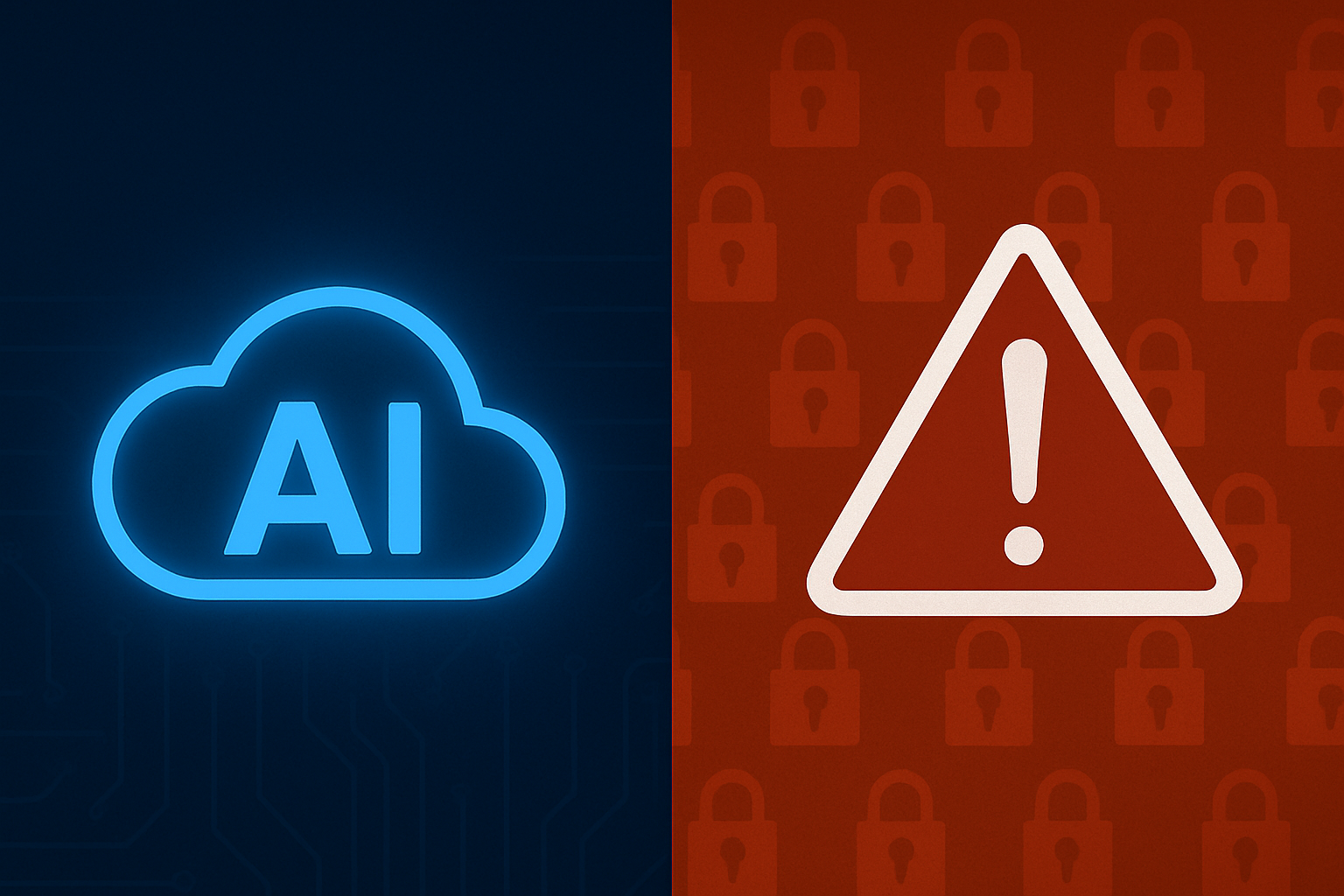
Artificial intelligence is everywhere, and it’s not slowing down. From writing emails to analyzing data, AI tools are helping employees work faster, smarter, and more efficiently. But here’s the catch: not everyone is using them wisely, or securely. We’re seeing a dangerous trend where employees feed sensitive company data into public AI platforms without realizing what’s at stake. When you paste internal documents, customer details, or confidential emails into a chatbot, that information can live on forever in someone else’s system. That’s a compliance nightmare waiting to happen. Even worse, some AI-generated outputs are being trusted without verification. Employees might use AI to summarize an invoice, write a contract, or draft a customer response, without realizing the tool just fabricated information or missed key details. The result? Embarrassing errors, data exposure, and potential legal trouble. Here’s what smart companies are doing right now: ✅ Creating an AI usage policy that outlines what tools are allowed, how they can be used, and what data is off-limits. ✅ Training employees on both the benefits and the risks of AI. Awareness is the first line of defense. ✅ Implementing data loss prevention (DLP) and monitoring tools to ensure sensitive information isn’t slipping through the cracks. ✅ Partnering with cybersecurity experts (that’s where we come in) to make sure security controls evolve as fast as AI does. AI can be a game-changer, but only if it’s used responsibly. Without the right guardrails, it can become your company’s biggest security gap. If you’re unsure how your employees are using AI, or if you even have visibility into it, it’s time to talk. We can help you set boundaries that keep innovation flowing and data locked down.
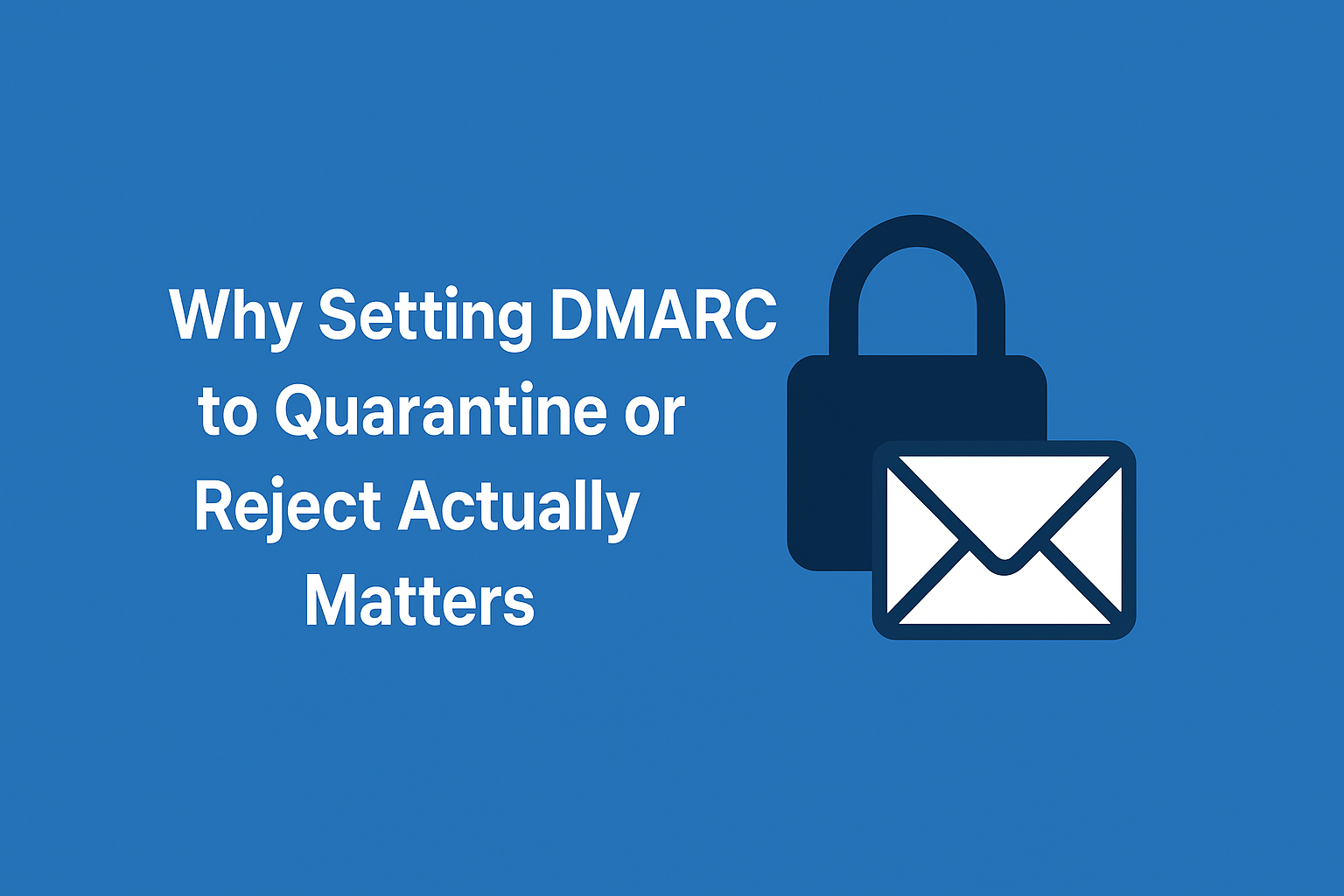
If email security were a neighborhood, DMARC would be the guard dog that never sleeps. But here is the catch. A guard dog only works if you actually let it bite. Too many businesses set up DMARC but leave it in a comfy none or monitoring mode, which is the cybersecurity equivalent of putting your guard dog behind a glass window and hoping the criminals feel guilty. Setting DMARC to quarantine or reject is where the magic happens. It is the moment your email security stops whispering politely and starts speaking with a voice of authority. When you enforce DMARC, you tell the world that only emails you approve can represent your domain. Everyone else gets tossed aside like spammy junk mail that never deserved your name on it in the first place. Why does that matter so much? Because hackers love impersonation. If they can trick your customers into thinking a fake email came from you, they win. They steal information. They plant malware. They damage trust. They make your business look sloppy. Enforcing DMARC slams that door shut by giving you total control over what gets delivered, what gets flagged, and what gets stopped cold. With quarantine, suspicious messages land safely out of view where your users cannot get tricked. With reject, impersonation attempts get obliterated before they ever reach an inbox. Both settings protect your reputation, your clients, and your peace of mind. In short, DMARC enforcement is not just a technical checkbox. It is a business survival move. It keeps your name clean, your communication credible, and your customers safe. Set it to quarantine or reject, and your email domain becomes a fortress instead of an open invitation. That is the kind of smart protection that keeps you one step ahead of the hackers. And in this game, one step is everything.

Let’s start with the obvious: if your Microsoft 365 account gets breached, it’s not “just” an email problem. It’s a full-blown business crisis. Microsoft 365 isn’t just where your inbox lives. It’s where your files, contacts, calendars, and even internal communications reside. It’s the digital heartbeat of your business, and when it’s compromised, attackers gain the master key to your kingdom. Here’s what happens next: 1. The attacker impersonates you. The moment your credentials or session token are stolen, the attacker can log in as you, sending invoices, asking employees to wire money, or requesting sensitive data. Because it’s coming from your real account, it’s incredibly convincing. 2. They pivot deeper into your organization. Most modern attacks don’t stop at email. Once inside, hackers search for shared files, OneDrive content, and Teams messages that contain passwords, vendor info, financial data, etc. Then, they expand their reach, often gaining access to other users’ accounts or systems. 3. Your reputation takes a hit. Imagine your clients getting phishing emails from “you.” Even if you contain the breach, the damage to trust can linger. Many businesses find it harder to recover reputationally than financially. 4. They may plant persistence. Attackers don’t always vanish after the first breach. They create hidden forwarding rules, drop malicious OAuth apps, or steal refresh tokens to maintain access, even after you reset your password. 5. Compliance and liability come knocking. If your company handles regulated data (like financial or health information), a breach can trigger mandatory reporting, investigations, and hefty fines. Even small businesses aren’t exempt. The Harsh Truth: If you think Microsoft 365 security “comes built-in,” think again. Out of the box, it’s like buying a house with locks, then leaving all the doors open. True protection means layering: ✅ Advanced email security and encryption ✅ Multi-factor authentication (and yes, it’s still essential) ✅ SOC monitoring to catch intrusions in real time ✅ Security awareness training for your team ✅ Regular penetration testing and vulnerability assessments If your Microsoft 365 gets breached, it’s not the end of the world, if you act fast and have the right team behind you. At ABT Solutions, we specialize in protecting businesses from these exact threats. We secure your Microsoft 365 environment, monitor for intrusions, and help you stay ahead of attackers before they strike. Don’t wait for the wake-up call. Your Microsoft 365 is the front door to your business. Let’s make sure it’s locked, alarmed, and watched 24/7.
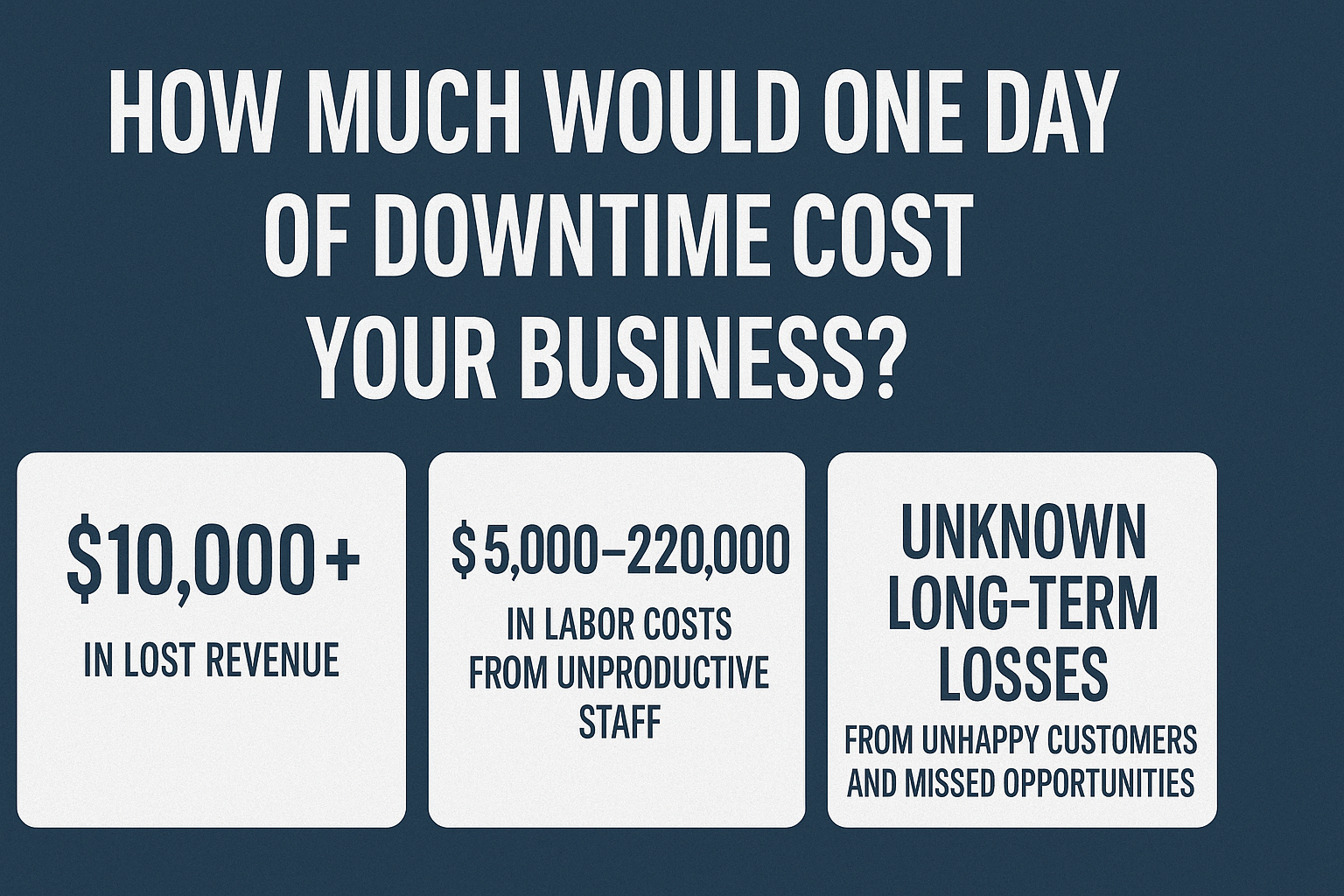
Let’s play a quick game of math, don’t worry, it’s the kind that makes your stomach drop, not your calculator smoke. Imagine you wake up tomorrow and your business is dead in the water. No email. No phones. No file access. No customer orders. No billing. No nothing. How much would that one day of downtime cost you? If you’re like most businesses, the answer is shocking. Between lost productivity, halted sales, recovery efforts, and the blow to your reputation, downtime can easily rack up thousands, or even tens of thousands, of dollars per day. According to industry studies, the average cost of IT downtime is between $5,600 and $9,000 per minute . Now, you might not be a Fortune 500 company, but even a small business losing access to systems for a single day could easily see: $10,000+ in lost revenue $5,000–$20,000 in labor costs from unproductive staff Unknown long-term losses from unhappy customers and missed opportunities And that’s before you even add the cost of recovering your systems, restoring backups, or paying the ransom if a cyberattack was involved. Here’s the harsh truth: Downtime doesn’t just cost money, it kills trust. Your clients expect you to be reliable. If they can’t reach you, they’ll find someone they can. At ABT Solutions, we help businesses eliminate that risk. From proactive monitoring and patch management to data backup and disaster recovery, our goal is simple: keep you up, running, and protected. Because prevention isn’t expensive, downtime is . If you don’t know how long your business could survive without access to your systems, it’s time for a conversation. We’ll help you find out before a hacker does.

For years, businesses have relied on VPNs (Virtual Private Networks) as the “secure” way to connect remote workers to company systems. But the truth is, VPNs, especially SSL VPNs, have become one of the biggest security liabilities in today’s threat landscape. Hackers aren’t breaking into businesses by guessing passwords anymore. They’re going straight after the tools you use to connect: VPNs and firewalls. The Problem with VPNs VPNs were designed to create a tunnel between a remote user and your company network. Once that tunnel is open, the user (or attacker) has broad access inside your network. It’s like giving someone the keys to the entire building when all they needed was access to one office. When attackers compromise a VPN, they don’t just get a foot in the door, they’re sitting in your lobby with access to everything. SSL VPNs and SonicWall Vulnerabilities In the past few years, we’ve seen a flood of zero-day vulnerabilities targeting SSL VPNs and firewalls. One of the most high-profile examples is the SonicWall SSL VPN vulnerability, which allowed attackers to bypass authentication and gain access directly into company networks. They didn't even need a password! That wasn’t a one-off event. Almost every firewall vendor, Fortinet, Cisco, Palo Alto, SonicWall, and others, has dealt with critical VPN-related zero-days. Cybercriminals actively scan the internet for exposed VPN portals, waiting to pounce on organizations that haven’t patched within hours of a new exploit being discovered. Why This Puts Your Business at Risk Single Point of Entry: VPNs often provide attackers with wide-open access once compromised. Zero-Day Exploits: Hackers don’t wait, many breaches happen before patches are even available. Credential Theft: If an employee’s VPN password is stolen, attackers bypass your defenses. Compliance Risks: Breaches through VPNs can expose sensitive data, leading to fines and legal issues. The Better Approach: Zero Trust Remote Access Instead of relying on VPNs, modern businesses are adopting Zero Trust solutions that limit access to only what a user needs, when they need it. This ensures that even if an account is compromised, attackers don’t get the keys to your entire network. What You Should Do Next If your business is still using SSL VPNs or traditional VPNs, you’re already at risk. Hackers are actively targeting these systems, and history has proven that more vulnerabilities will continue to surface. It’s time to move away from outdated VPN technology and adopt modern security practices that keep your business safe. At ABT Solutions, we help businesses just like yours secure their remote workforce with Zero Trust access, advanced firewall management, and 24/7 monitoring, so you don’t have to worry about whether your VPN is the next door hackers walk through. 👉 Contact us today before the next firewall zero-day becomes tomorrow’s breach.
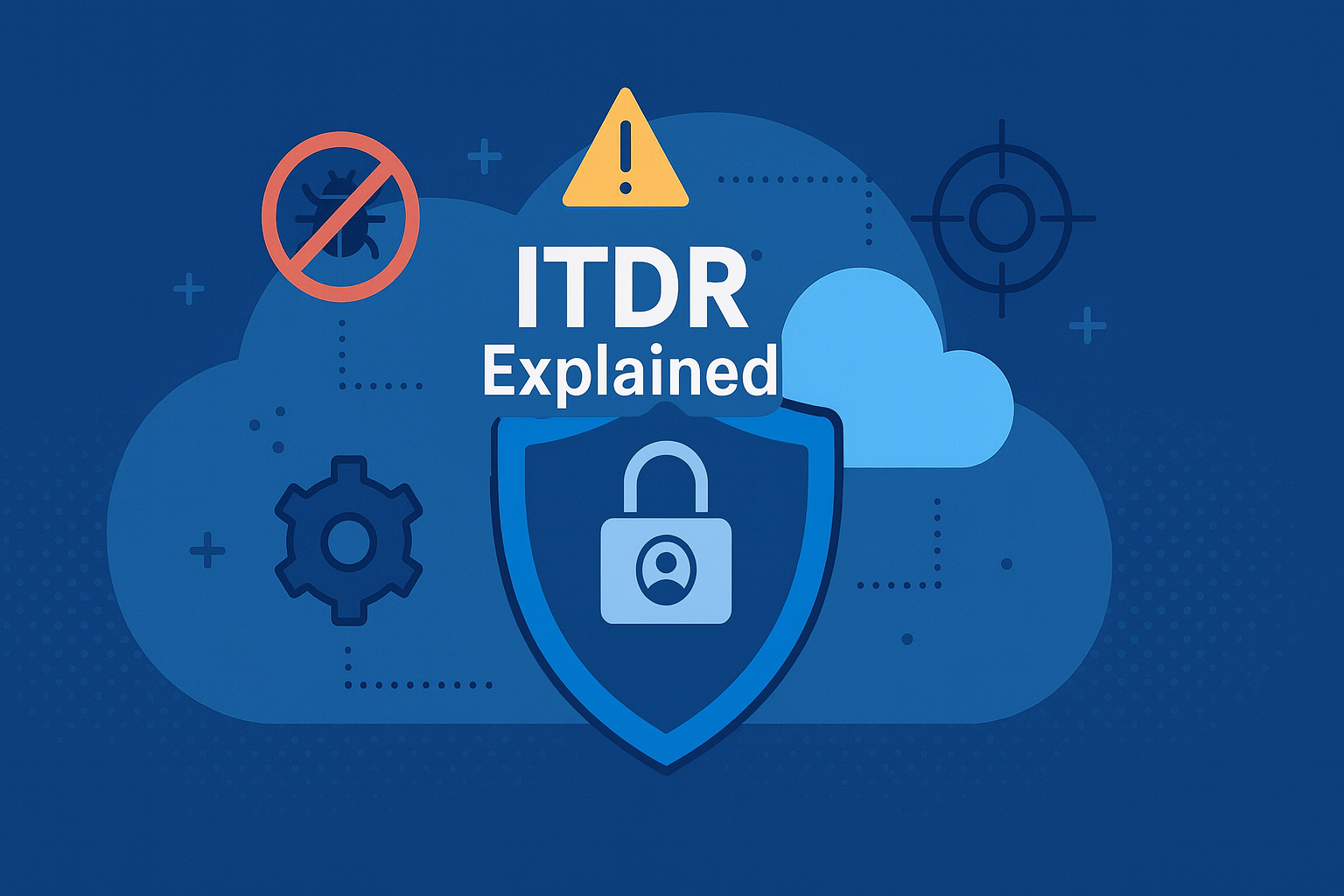
What is ITDR? Identity Threat Detection & Response (ITDR) is a cybersecurity discipline built to detect, investigate, and mitigate identity-based attacks in real time. It continuously monitors user activity, analyses access patterns, and responds to identity threats such as compromised credentials, privilege escalation, and lateral movement. Unlike traditional security tools that focus primarily on endpoints or networks, ITDR adds that identity-specific visibility and enforcement layer designed to stop adversaries that exploit credentials or identity infrastructure. Why ITDR is critical: the growing threat of identity-based attacks Today’s cyberattack landscape has shifted. Identities are now the new battlefield. Consider: Attackers are using MFA-bypass techniques, stolen session cookies, credential stuffing, and other identity-centric tactics to breach organizations in minutes. The environment has grown more complex: cloud adoption, hybrid infrastructures, and remote work have expanded the identity attack surface. Even where traditional tools (IAM, PAM, EDR) exist, gaps remain because once an attacker is operating under valid credentials, many protections simply don’t trigger. In short: if you’re managing email, customer data, or any access to systems, you are a target. As I often say: preventing identity compromise isn’t optional, it’s business insurance. ITDR vs EDR (and where they work together) While EDR (Endpoint Detection & Response) monitors devices, laptops, servers, workstations, ITDR focuses on the identities behind the access. Here’s how they differ and overlap: EDR Looks at endpoints for malware, exploits, device-based attacks Detects anomalies on machines, monitors system logs and network traffic ITDR Monitors logins, access rights, privilege changes, identity behaviour across on-premises, cloud and hybrid identity stores Focuses on credential abuse, privilege misuse, lateral movement via identity pathways such as Microsoft 365. Together When EDR logs show suspicious activity on an endpoint, ITDR can help determine whether that activity originated from credential compromise or identity misuse. This combined view helps your security team understand not just the “what” but the “why” and “how” of the attack chain. What to look for in an ITDR solution When evaluating an ITDR platform or service, make sure it supports these key capabilities: 1. Continuous visibility You need real-time insight into all identity-related activity: authentication attempts, privilege escalations, new service accounts, directory changes across on-premises and cloud. Behavioral analytics, machine learning and anomaly detection must play a part. 2. Proactive enforcement Detection alone is not enough. Once suspicious identity behaviour is identified, you need options like: step-up authentication, session termination, account revocation, blocking lateral movement. Automated enforcement gives you response speed and containment. 3. Risk-based prioritization Security teams are overwhelmed by alerts. The ITDR solution must help prioritize real threats over noise by correlating identity behavior with risk context such as user role, asset value, behavior baseline, environment. How we at ABT bring ITDR to life At ABT, we believe identity security is foundational. Here’s how we implement ITDR for our clients: We map the identity landscape: human users, service accounts, API keys, machine identities. We implement continuous monitoring across identity stores (on-premises directory, cloud IAM, hybrid accounts) to feed the direct identity telemetry. We overlay behavioural analytics and anomaly detection to identify high-risk identity events (e.g., unusual login time/location, privilege escalation after inactive period, access from untrusted devices). We integrate with incident response workflows to quickly isolate compromised identities, trigger MFA challenge, revoke access, and block lateral movement. We tie identity events into our broader security ecosystem (endpoint, network, SIEM) so we can trace the attack path: from compromised identity to endpoint to payload. We deliver actionable intelligence and playbooks so your internal team understands how to respond, adapt and evolve continually. Getting started with ITDR: three steps to build your identity protection strategy Assess your identity attack surface Identify all identities in your environment: employee logins, privileged accounts, third-party/service accounts, machine identities. Evaluate where gaps exist: outdated credentials, stale service accounts, excessive privileges. Deploy continuous monitoring and detection Roll out identity-telemetry collection across all identity systems. Enable behavioural analytics, set baselines for normal identity activity, configure alerts for deviations (MFA bypass attempts, privilege creep, unusual access). Automate response and enforce least privilege Build workflows that trigger when identity threats are detected: isolate accounts, force password reset, require step-up authentication, audit privileges and revoke excess rights. Tie this into your turnaround playbooks and ensure your team knows their responsibilities. Final Word Identity is the newer control plane. If an attacker steals credentials, bypasses MFA, or elevates privileges, they can operate undetected and achieve devastating results. By adopting ITDR, backed by a trusted cybersecurity advisor, you don’t just “hope” for protection, you enforce it, with visibility, response and control. If your organization isn’t sure where it stands with identity threat protection, let's talk. You don’t have to navigate this alone.
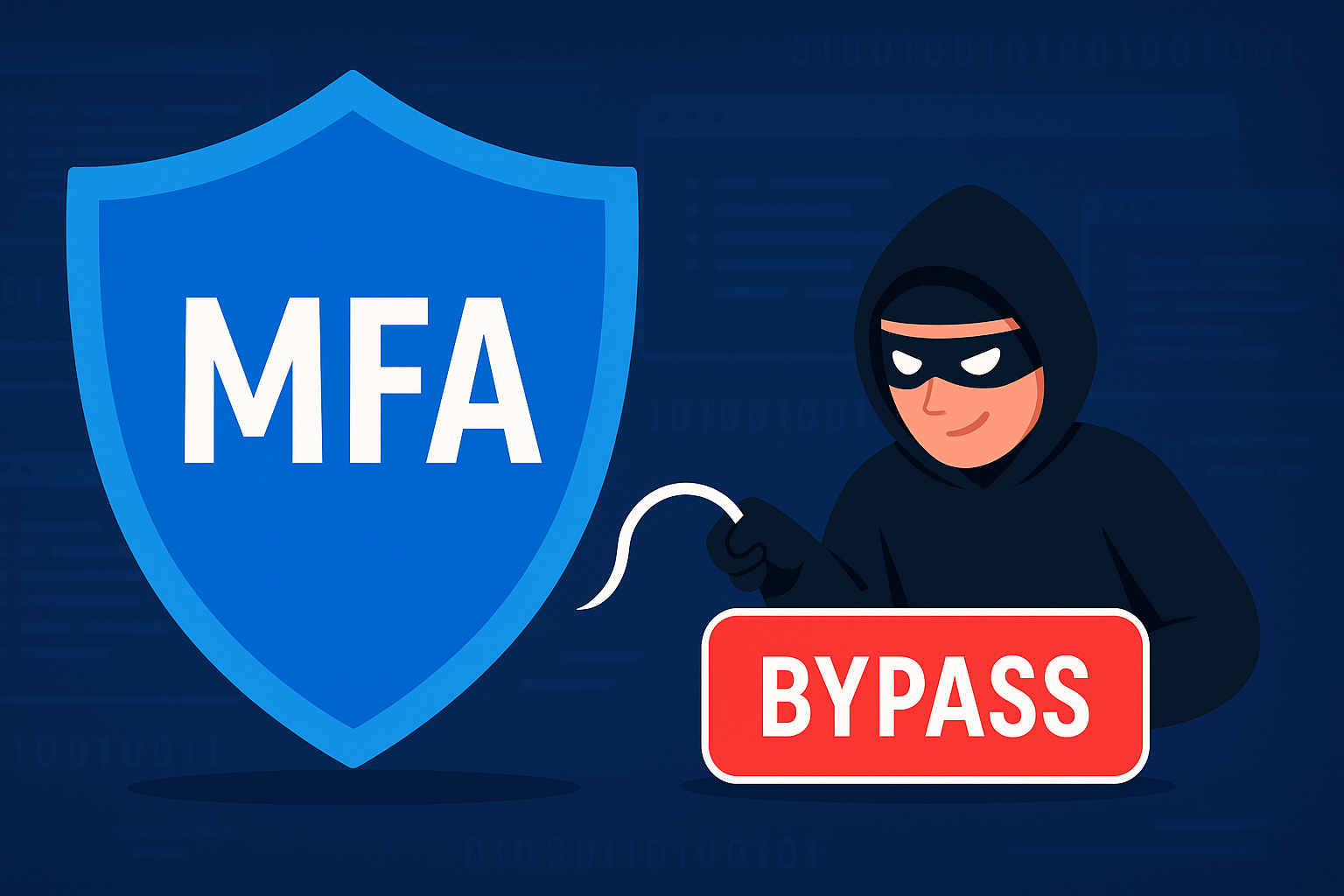
We always recommend multi-factor authentication (MFA). It’s an important layer of protection. But here’s the truth: MFA alone is no longer enough. Attackers are getting smarter and sneakier. One of the fastest growing threats right now is the Adversary-in-the-Middle (AiTM) attack, and it’s especially targeting Microsoft 365. These attacks bypass MFA. They don’t drop malware. Instead, they use legitimate tools and stolen session tokens to “live off the land.” That means they can look just like normal users inside your environment, making them extremely hard to detect. Real-World Example: A Small Plumbing Company Nearly Shut Down A friend of mine owns an MSP, and just recently he got a call from a plumbing company with 10 employees. They were in a panic because they couldn’t send emails, everything just sat in the sent folder. After investigating, my friend found that one of their staff had clicked on what looked like a DocuSign email. No password was entered. No credentials were typed in. Yet attackers still managed to slip inside their Microsoft 365 environment. Once in, the attackers configured a separate domain and started sending malicious emails on behalf of the company. Operations came to a grinding halt. Within an hour, my friend’s team had: Removed the attackers from the environment Rolled out their security monitoring software Reset all passwords and MFA with stronger rules Started the staff on their first cybersecurity training session Here’s the kicker: this plumbing company had no cybersecurity in place before this incident. Now, they’ve got the protections, training, and monitoring needed to prevent this from ever happening again. You Can’t Do This Alone The bad guys are no longer just brute-forcing passwords or sending obvious spam. They’re using advanced, stealthy methods that go around your defenses instead of through them. MFA is a must, but it’s not enough on its own. You need a cybersecurity partner to continuously monitor, detect, and respond to these evolving threats. The cost of doing nothing is a business that can grind to a halt in minutes. The cost of being protected? For small businesses, it can sometimes be less than what you’re already paying for phone or internet service. If you’re not sure where your business stands, let’s talk. Don’t wait until you’re the next victim of an AiTM attack.
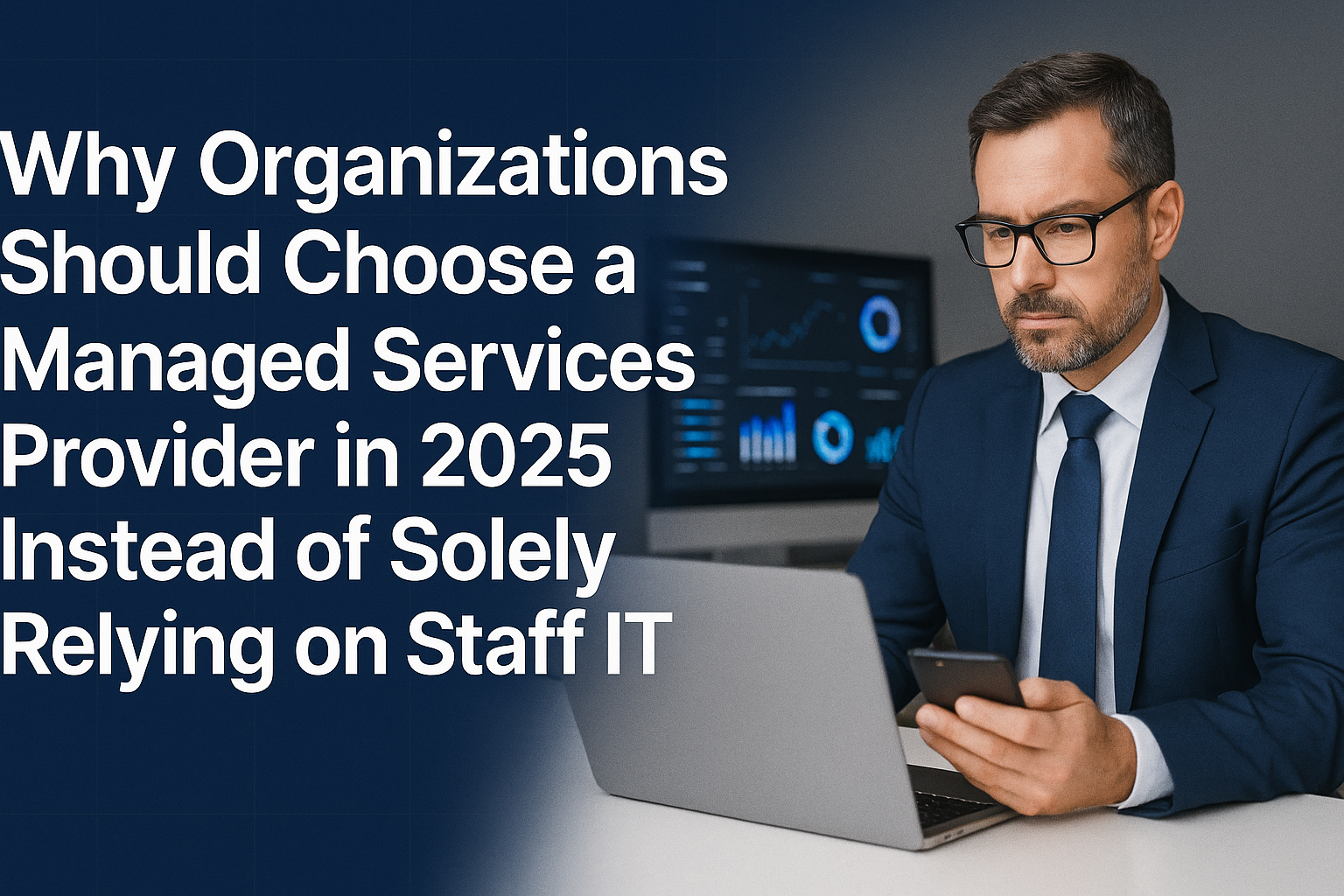
Every organization in 2025 faces the same challenge: doing more with less. Budgets are tight, cyber threats are escalating, and customers, members, and employees all expect fast, reliable services. Many organizations still rely on a single in-house IT employee, or a small IT staff, to handle everything from resetting passwords to defending against ransomware. The reality is, that model simply isn’t enough anymore. Here’s why organizations should look to a Managed Services Provider (MSP) in 2025 instead of relying solely on staff IT: 1. Cybersecurity Has Become Too Complex Cyberattacks against organizations of all sizes are on the rise. Hackers no longer just target large corporations, they increasingly go after small and mid-sized businesses, nonprofits, schools, and professional practices because defenses are often weaker. A single IT staffer cannot monitor systems around the clock, implement enterprise-grade protections, or keep up with evolving threats. An MSP brings an entire team equipped with Security Operations Center (SOC) monitoring, endpoint detection, intrusion prevention, and advanced security tools. These are resources most organizations could never afford on their own, nor would they know how to assemble into a security stack strong enough to defend against modern threat actors. 2. 24/7 Support and Monitoring A staff IT person clocks out at 5 PM. Hackers don’t. MSPs provide round-the-clock monitoring and response. That means ransomware attacks at midnight get caught early, servers that crash over the weekend get worked on before monday, and your operations don’t suffer long outages that damage your reputation. 3. Scalable Expertise IT staff often wear too many hats: networking, cybersecurity, backups, compliance, user support, and more. No one person can be an expert in all areas. With an MSP, organizations gain access to a team of specialists in different areas of technology. That expertise scales as you grow, without the cost of recruiting, training, and retaining multiple full-time employees. 4. Budget Predictability Budgets are often set years in advance. Unexpected IT costs, like replacing servers after a failure or paying for emergency breach recovery, can wreck financial stability. MSPs provide predictable, fixed monthly pricing that covers proactive maintenance, monitoring, and support. This helps organizations plan more effectively while avoiding expensive surprises. 5. Compliance and Data Protection Organizations of all kinds handle sensitive data: financial records, health information, member databases, or intellectual property. Regulations around data handling and privacy are becoming stricter every year. An MSP ensures that data is encrypted, backups are tested, and compliance requirements are met, protecting both your organization and the people who trust you. 6. Focus on Your Mission When IT issues consume staff attention, leaders and employees can’t focus on what matters most: serving customers, members, or the community. By outsourcing IT management to a trusted MSP, organizations free up time and resources to grow, innovate, and serve more effectively. 7. Future-Proofing Technology Technology is advancing quickly: cloud solutions, AI-driven services, remote collaboration, and industry-specific applications are becoming essential. An MSP helps organizations adopt new technologies smoothly and securely, ensuring they don’t fall behind while competitors modernize. Who Needs an MSP? The truth is, every type of organization is a target for cyberattacks and can benefit from professional IT management. Whether you are in: Municipalities and Local Government Financial Services (banks, credit unions, investment advisors, insurance firms) Healthcare and Medical Practices Education (K-12 schools, colleges, training centers) Nonprofits and Community Organizations Manufacturing and Industrial Companies Professional Services (law firms, accounting, CPA, engineering, etc.) …a Managed Services Provider can deliver the protection, reliability, and expertise you need. Final Thought IT is no longer just about fixing computers. It’s about defending against cyberattacks, keeping essential services running 24/7, and planning for the future of digital operations. In 2025, a single staff IT person simply cannot carry that responsibility alone. By partnering with a Managed Services Provider, your organization gains the expertise, protection, and scalability it needs to safeguard data, maintain uptime, and grow with confidence, without blowing the budget.

Anthropic’s latest threat report confirmed what cybersecurity professionals have feared: the barrier to launching ransomware attacks has collapsed. Who is Anthropic and why should we believe them? Anthropic is one of the world’s leading AI companies, founded by former OpenAI researchers and backed by Amazon and Google. Their AI, Claude, is a direct competitor to ChatGPT. When Anthropic issues a threat report, it’s not hype, it’s insider intelligence from a company building the very technology now being weaponized. In one documented case, a single individual with no coding skills used Claude Pro to: Research and select targets Develop custom malware Automate extortion campaigns The attacker successfully executed 17 ransomware incidents , demanding ransoms between $75,000 and $500,000 . Why This Matters Until now, ransomware required specialized technical knowledge, underground criminal networks, and months of preparation. That barrier to entry is GONE . Today, all it takes is an AI subscription and basic English skills . Artificial intelligence has compressed the learning curve from years to weeks. That means: Attacks will multiply — What one unskilled attacker pulled off, thousands more can replicate. Small businesses are in the crosshairs — Automation makes “smaller targets” profitable at scale. Cyber insurance costs will spike — Actuarial models are based on yesterday’s risks, not today’s reality. The Dangerous Window We’re In The defense industry will adapt, but there’s always a lag between new attack methods and effective countermeasures. Right now, we’re in that gap. This is the most dangerous time for unprepared organizations. What Businesses Should Do Immediately If you’ve been putting off security upgrades, the clock just ran out. Here are urgent steps every organization should take: Audit your current security posture — Identify vulnerabilities before attackers do. Upgrade your incident response plan — Assume a breach is possible and plan accordingly. Harden email and endpoint security — Most ransomware campaigns begin with phishing or weak endpoint protection. Invest in employee training — Humans remain the easiest entry point for attackers. Review your cyber insurance coverage — Premiums and exclusions are about to shift dramatically. The Bottom Line Cybersecurity risk has changed permanently. If one person with no technical background can launch automated ransomware campaigns, the floodgates are open. Doing nothing is no longer an option. The question isn’t if attackers will find your business, it’s whether you’ll be ready when they do.
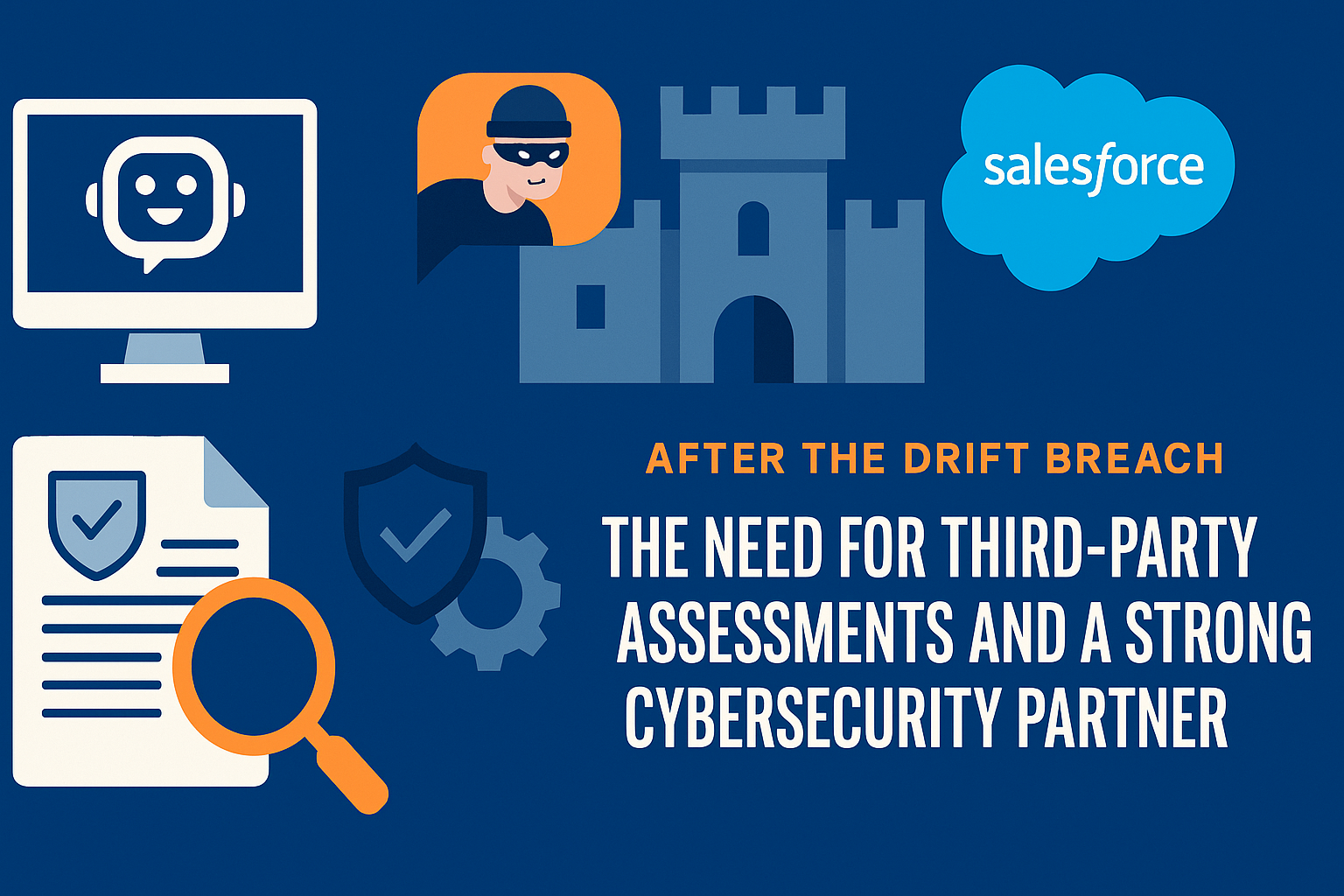
The recent Drift by Salesloft breach is a reminder that even tools we think of as harmless, like chatbots or small integrations, can open the door for hackers. In this case, attackers got into Drift and used that connection to steal data from big companies through Salesforce. While the headlines are about large organizations, the real lesson is that every business is at risk if they don’t stay on top of third-party apps and connections. This is why regular security assessments and having a trusted cybersecurity partner are so important. This post is a bit more technical and detailed than usual. I just wanted to make sure all the information was clear and available, so thanks for bearing with me. 1. The Anatomy of the Breach: How It Happened Origin in GitHub Access Threat actors associated with the group tracked as UNC6395 gained access to Salesloft’s GitHub account between March and June 2025 . This foothold allowed them to extract sensitive credentials including AWS keys, passwords, Snowflake tokens, and more Token Theft and Lateral Movement Between approximately August 8 and August 18, 2025, attackers exploited the SalesDrift integration, which connects Drift’s AI chat features to Salesforce, to steal OAuth (Authentication) and refresh tokens. These tokens were then used to access customer Salesforce environments and exfiltrate data. Scope of Impact Hundreds of organizations were affected, including cybersecurity giants such as Palo Alto Networks, Cloudflare, Zscaler, Proofpoint, CyberArk, Tenable, and Workiva. Notably, exfiltrated data typically included business contact names, support case metadata, job titles, and occasionally credentials like AWS keys and Snowflake tokens. Broader Credential Harvesting Beyond Salesforce, the “Drift Email” integration may have compromised small numbers of Google Workspace accounts , though core Google systems remained untouched. Sophisticated Attack Tactics The attackers displayed operational stealth, deleting query jobs to erase evidence and avoid triggering alerts. 2. Why Primarily Larger Enterprises Got Hit Heavy Reliance on SaaS Integrations Organizations like Salesforce customers often rely on complex ecosystems of integrated tools, SalesDrift and Drift for CRM automation included. These dependencies expand attack surfaces. High-Value Targets Big companies tend to store extensive customer data and internal sales intelligence, making them lucrative targets for supply chain attacks. Broad Token Privileges OAuth tokens used in integrations can grant broad access. If not properly scoped or monitored, they act like skeleton keys, especially in environments with weak visibility. 3. A Wake-Up Call: Why Every Business Needs Third-Party Security Assessments Even if you're not in enterprise-level security, the Drift incident spotlights universal threats: Hidden Vulnerabilities A breach in a small third-party app, like a chatbot, can bypass traditional perimeter defenses, especially in SaaS-oriented workflows. Inadequate Monitoring and Logging The breach revealed lagging detection systems and weak audit trails. Proactive logging and anomaly detection could have spotted unusual OAuth token behaviors sooner. Token Persistence and Privilege Creep Stale or overly broad tokens, particularly in integrations with powerful tools like Salesforce, become a liability if not effectively revoked or rotated. 4. Why a Strong Cybersecurity Partner Matters A trusted cybersecurity partner can bring in forensic readiness, real-time monitoring , and incident response maturity to detect, contain, and mitigate breaches quickly. Third-Party Risk Management (TPRM) frameworks help organizations: Visualize interconnected integrations (not just direct but also fourth-party risk). Tag high-risk integrations and enforce strict privileges. Monitor OAuth/API activity patterns for anomalies. In the Salesloft case, external assistance from Mandiant and Google’s GTIG was critical to containment; without such partners, the breach could have wreaked even more havoc. 5. Key Takeaways and Actionable Advice Audit all third-party integrations - Detect unknown or outdated integrations that carry token privileges. Revoke and rotate credentials promptly - Blocks persistence if a channel is compromised. Enforce least privilege - Limit what each integration can access. Implement robust logging & monitoring - Detect stealthy behaviors like deleted query jobs. Engage in continuous TPRM - Visualize both direct and indirect risk across your tech stack. Partner with cybersecurity experts - Be ready for rapid response, forensic investigation, and containment. Conclusion: A Silent Breach, A Loud Reminder The Salesloft Drift breach u nderscores a harsh reality: even integrations perceived as innocuous, like AI chatbots, can become entry points for high-impact supply chain attacks. While major firms bore the brunt, the same vulnerabilities apply to organizations of every size. Now is the time to deeply evaluate third-party risk and increase defenses via continuous assessment, strong oversight, and reliable cybersecurity collaboration. We live In a world where trust is transacted through tokens, being vigilant is your best safeguard.
